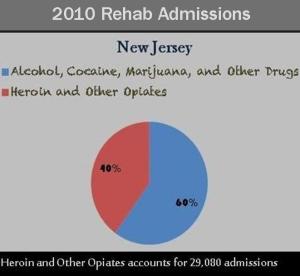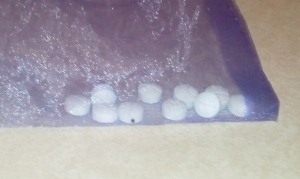Source: www.whitehouse.gov/
The increased use of prescription drugs in New Jersey is producing more heroin addicts. The growth rate in popularity of opiate narcotics is alarming, as the underground market flourishes to sustain a solidified appetite.
“A bag of heroin can be cheaper than a six-pack of beer,” said DEA Special Agent John Gilbride, in a CNN article.
The article explains that the price range of heroin is $5 to $10, rendering it more cost effective than synthetic opiates, such as Oxycontin or Hydrocodone.
In 2008, the U.S. Substance Abuse and Mental Health Services Administration reported a sharp increase in legal drug abuse, according to David Kerr; the president, CEO, and cofounder of Integrity House, a recovery center in Newark, NJ.
His blog features a SAMHSA statement: “Between 1995 and 2002, there was a 163% increase in the number of emergency room visits tied to the abuse of prescription drugs.”
According to Kerr, there has been a 200% increase in methadone purchases by addiction clinics since 2000, a strong reflection of the growth in opiate addiction.
Aside from being situated between major shipping harbors such as New York, Philadelphia, and Baltimore, there could another reason for NJ’s craving.
“NJ has the most pharmaceutical firms in the country condensed into one small area,” says NJ Criminal Defense Attorney, Anthony N. Palumbo.
According to his blog, the DEA claims that the state’s most abused drugs are Percocet, Xanax, Vicodin, Oxycontin, and Hydrocodone.
Source: NJ Substance Abuse Monitoring System

Based on state data. Please note that Federal and state statistics can conflict. Chart created by Candice Martinez
What is an opiate?
The opium poppy, or papavar somniferum, is the source for the mass seduction of countless humans. The love-hate relationship with the drug is as old as civilization itself.
It can be cultivated for the seeds, sap, and pipe rods; all of which provide the sought-after intoxication.
The opium is a thick liquid that gets extracted from the plant, according to Shelbykanderson, a commentary blogger.
“After the petals have fallen off, the bud is slightly sliced open and the raw opium can be taken out.”, the blogger writes.
Drug history does repeat itself. In order to understand how this evolving epidemic came to be, a few dates and events are highlighted.
The following is based on a timeline from http://opioids.com/timeline/:
In 3400 B.C., the Sumerians referred to it as “Hul Gil”, or “joy plant”. Opium’s popularity spread to other civilizations including Egypt, Greece, and China. Fast forward some centuries, the British East Indian Company begins to make contracts for the booming opium industry, which would eventually lead to the devastating Opium Wars in China. In 1803, Friedrich Sertuerner of Germany isolates the active ingredient and discovers alkaloids: principium somniferum, or morphine. By 1874, C.R. Wright of England is the first to synthesize diacetylmorphine, or heroin. The Bayer Company patents it as a common remedy. In 1905, the U.S. bans opium. In 1925, the US Treasury Department’s Narcotics Division illegalizes the sale of all narcotics; consequently, heroin is sold through the black market. In the late 1960s, the U.S. saw an explosion in heroin abuse due to the Vietnam War, which resulted in widened access to opium poppies.
Since then, the increase in synthetic opiate prescriptions has accelerated the heroin epidemic.
Source: NJ Substance Abuse Monitoring System
“Getting high and feeling good quickly can now also be fixed by legal drugs, but often the long-term results are a lifestyle of addiction and misery,” writes David Kerr; president, CEO, and cofounder of Integrity House, a recovery center in Newark, NJ.
“We have learned that there is probably a pill or medication that will fix anything wrong with us without waiting for our bodies to catch up.”
Six millennia of history may demonstrate that humans have a natural desire for the opiate drug. However, with the advancing pharmaceutical industry, could synthetic opiates be the x-factor in another Opium War? History does repeat itself and new pills are constantly being manufactured despite the rapid increase is its abuse. As long as there is a demand, the supply will always be available; legally or illegally. Stock holders prefer the more lucrative legal demand.



mary breoth
February 27, 2012
It is better to not have too much hype surrounding this issue. Each generation of teens has their using history. Their personal adventures. It is relative. It could be that the sensory overload for the average citizen in the US is such that the ease and comfort from ingesting drugs such as the opiates is probably welcome. But the lesson that druggies learn too late is the deceptive nature of using. You pick up and learn the hard way. Do not be discouraged. If you suffer and find God, then you are restored and will have a purpose: to help other addicts recover. It will be your second career. Perhaps your calling to begin with.